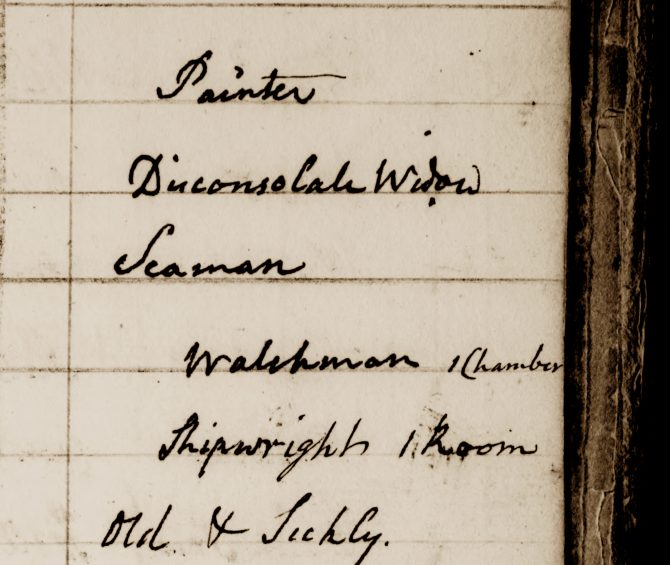The BPL Rare Books and Manuscripts Department has just digitized a major collection of early Boston tax records. Comprised of approximately 90,000 handwritten pages, the collection covers the years 1780 through 1821 and represents a rich data set for genealogists and historians alike. The records contain a wealth of information about individual residents and about the evolution of Boston neighborhoods, spanning four important decades in the city's history.
Links to each of the individual records can be accessed on their BPL collections page, opens a new window. Further information, including instructions for searching and browsing the records, along with readings and other resources, are all available in the BPL research guide for the collection, opens a new window.
Digitization of these tax records was made possible thanks to the generous support of the Associates of the Boston Public Library, opens a new window.
What the records contain
On a basic level, the records are fairly straightforward. Entries are organized by year and ward, containing the full names of individuals, property assessments, and taxes both owed and paid. From a deeper research perspective, however, details contained within the records that may at first seem unimportant can actually be enormously valuable. Immediate adjacencies -- in other words, records of who lived near whom -- along with first-hand observations about the conditions of housing, detailed notes on taxpayers' profession, race, and ethnicity; the names of business partners and apprentices; records of imprisonment and death; even periods of time when mariners were at sea -- all these are included among the pieces of information captured by the assessors and clerks who created these records.
Nearly all of the details listed above are contained within a series of records known as "taking books." These, the original notebooks that the tax assessors carried door-to-door as they walked through each ward, are the most immediately accessible documents in the collection; in many ways, they are also the most exciting. In addition to a wealth of other information, the taking books often contain the assessors' notes and observations on the people they encountered. From a historical perspective, these notes function as real-time, first-person documentation of the lives of everyday Bostonians.
Summarizing the value of the taking books for the study of late-eighteenth-century Boston, Jacqueline B. Carr notes that
it is possible [in the taking books] to examine a variety of demographic configurations, such as population fluctuations, inward and outward migration, residential and occupational patterns, property ownership, specific aspects of the nascent black community, and the problems that accompanied opportunities in the town as a whole and throughout each of its twelve wards.*
Digitization of these tax records marks a significant addition to the extant corpus of online primary source material relating to the early history of Boston. Collections that are already online include municipal records, court documents, correspondence, census records, directories, and other important groups of materials held by local institutions including the City of Boston Archives, Harvard, the Mass. Historical Society, the Boston Athenaeum, the New England Historic Genealogical Society, and many others.
*Jacqueline B. Carr, "A Change 'As Remarkable as the Revolution Itself': Boston's Demographics, 1780-1800," The New England Quarterly 73, no.4 (2000): 585




Add a comment to: Recently Digitized: Boston Tax Records, 1780-1821